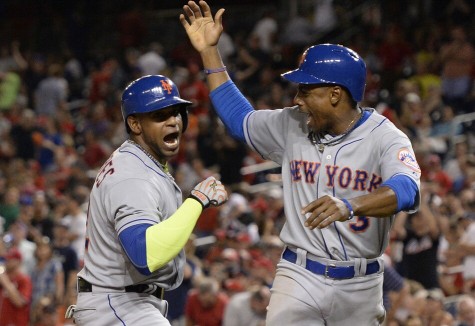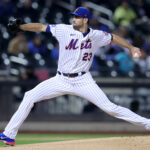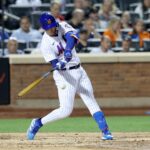
Three game series against National League East division rival Washington Nationals. Three comeback wins. Seven game lead in NL East division standings. Two games behind the Los Angeles Dodgers for National League first round home field advantage, with possible second round home field if the St. Louis Cardinals are upset in the first round.
The New York Mets are riding high.
Here are five takeaways from last night’s exciting 5-3 comeback victory.
The Infield Playing In During the Fourth Inning
I hate giving up outs. I hate position players bunting before the eighth inning. I hate the infield playing in before the before the eighth inning.
Simply, giving up outs from playing the infield in gives the offense a higher probability for more runs and possibly multiples of runs in an inning.
I understand Terry Collins believed last night’s game would be a low scoring game after seeing Strasburg dominate the first four innings. The problem with this theory is the Nationals bullpen amassing a 14.21 ERA in 6.2 innings pitched in the previous two games in this series. Additionally, the Mets hitting has been hot and have shown consistent recent late game success over the past month. Collins needs to trust and believe in the Mets hitting and momentum.
Playing the infield in gave up an easy potential out on Clint Robinsons weak groundball in the location Wilmar Flores normally plays. Playing the infield in did not effect Bryce Harper scoring on Robinson’s weak groundball single as Harper would have scored if the infield was at normal depth.
However, Robinson would have scored later in the fourth inning on Wilson Ramos fly ball to centerfield if it weren’t for Robinson’s knucklehead tag out, standing up off of the third base bag after originally sliding into third safely
Travis d’Arnaud
D’Arnaud was aggressive and smart at the plate going 2-for-4 night with a home run.
More importantly was his at-bat in the top of the ninth inning, hitting an opposite field groundball allowing Lucas Duda to move to third base with less than two-outs. Duda eventually scored the insurance run.
Jacob deGrom: W, 7.0 IP, 2 R, 5 H, 9 SO, 2 BB
DeGrom showed fastball command low in the strike zone, throwing fastballs at a 73.01% strike rate. Impressively, deGrom produced swing and misses with his full repertoire of pitches totaling 23 Nationals swing and misses. According to Brooks Baseball PitchF/X tool, here is the pitch to miss rate breakdown:
Fastball: 22.2% miss rate
Changeup: 25.0% miss rate
Slider: 21.1% miss rate
Curveball: 25.0% miss rate
Higher miss rates show a pitchers ability to better control the outcomes of at-bats, producing more strikeouts and weaker contact.
Stephen Strasburg: L, 7.1 IP, 3 R, 5 H, 13 SO, 1 K
If you saw the game live, Strasburg’s curveball was noticeably sharp resulting in eight swing and misses (22.9% miss rate). Mets hitters tried working the count but Strasburg threw 67% strikes translating to only two Mets at-bats getting to three-ball counts.
Unfortunately, I predict Strasburg will hurt his elbow in the next few years. As pitchers break their throwing hand from their glove hand beginning their pitching motion, pitchers need to hinge or bend their elbows. This helps whip their arm forward at maximum speed translating to higher pitch velocity. When this hinging takes place, the pitchers arm needs to take the shape of an upside down L, not an inverted W. Strasburg hinges with an inverted W shape.
Taking the inverted W shape causes Strasburg’s throwing hand/forearm to whip around his elbow instead of over his elbow to his release point. Over time, this movement is one way to cause elbow wear and tear resulting in Tommy John Surgery.
Quietly Johnson is producing lately. Since August 29th, Johnson has 25 plate appearances resulting in two homeruns, a .348 batting average and a .652 slugging percentage.
Follow Chris Zaccherio on Twitter @ziography for more Mets insight going beyond statistics.
















